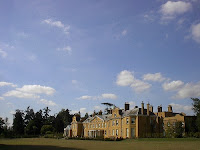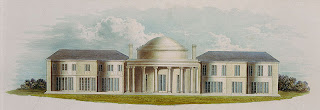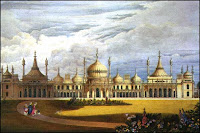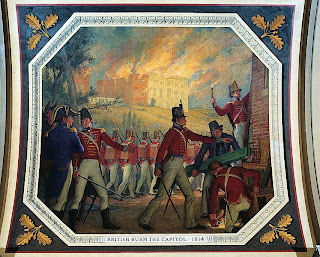 Today I’m swamped with a writing deadline and a minor family delay and to top it off, I’m also a guest at USA Today’s Happy Ever After blog (Stop by and say hi–please!!!).
Today I’m swamped with a writing deadline and a minor family delay and to top it off, I’m also a guest at USA Today’s Happy Ever After blog (Stop by and say hi–please!!!).
So I’m going to cheat a little here at Risky Regencies and give you a redux of a blog I wrote in 2009.
But I can’t start the week without saying a “WAY TO GO” to London and the UK for a fabulously done Olympics! I didn’t get to watch as much as I would have liked, but I kept up with the highlights and am proud of our USA team (especially the women) and of the British team, coming in THIRD in medal count. That is amazing. Something to add to that British pride so greatly showcased throughout the whole Olympics.
Back to my old blog….When in doubt (or on deadline) who can you turn to but Wellington? I mean, he saved the day from Napoleon, didn’t he?
Here’s the text of the 2009 blog:
As a certified Wellington Groupie (Kristine Hughes is the founding member) and in continuing honor of the Waterloo Anniversary, I thought I would simply share some of my Wellington-related photos and thoughts.
 When I first fell in raptures about Wellington (or dear Artie, as Kristine calls him), it was at Stratfield Saye, Wellington’s country house. Of all the houses we saw on that 2003 trip to England, Stratfield Saye seemed the most like it was a home. It was a home. The present duke’s son and his family live there, but you could still feel the first Duke in every room. An outer building housed the funeral carriage that carried the Duke’s body through London. A recording played of all his honors, as had been read out during his funeral. I realized that this had been a truly great man.
When I first fell in raptures about Wellington (or dear Artie, as Kristine calls him), it was at Stratfield Saye, Wellington’s country house. Of all the houses we saw on that 2003 trip to England, Stratfield Saye seemed the most like it was a home. It was a home. The present duke’s son and his family live there, but you could still feel the first Duke in every room. An outer building housed the funeral carriage that carried the Duke’s body through London. A recording played of all his honors, as had been read out during his funeral. I realized that this had been a truly great man.

 On that trip we also got to go up to the top of the Wellington Arch in London, and of course we toured Apsley House, also known as Number One London. Apsley House felt more like a museum than a house and well it should. It was filled with wonderful art and artifacts.
On that trip we also got to go up to the top of the Wellington Arch in London, and of course we toured Apsley House, also known as Number One London. Apsley House felt more like a museum than a house and well it should. It was filled with wonderful art and artifacts.
 Also in London we visited Lock and Co, a Hatters shop that has been in Mayfair since 1676. On display there are Wellington’s and Nelson’s hats, instantly recognizable.
Also in London we visited Lock and Co, a Hatters shop that has been in Mayfair since 1676. On display there are Wellington’s and Nelson’s hats, instantly recognizable.
I don’t claim to be an expert on Wellington. I’ve just read one biography (and can’t remember which one it was), but I think of him as a man with great integrity, courage and honor. As a boy he didn’t show much promise, but his mother sent him to a military academy in Europe (near Waterloo, I think) and he found his strength. As a military man he understood how to use his resources, he was clever, and he was brave. He rode the battlefield during Waterloo, was everywhere he could be and ignored the danger to himself. He cared about his men. One of my favorite Wellington quotes is: “Nothing except a battle lost can be half so melancholy as a battle won.”
He was not a good husband, although he felt honor-bound to marry his wife, because she thought they were betrothed and had waited for him while he served in India. He had many dalliances throughout their marriage and one has to wonder how his wife felt as this man grew in greatness and increasingly left her behind. His sons could not match his success. Who could? I like this quote from his son after the Duke’s death, “Imagine what it will be when the Duke of Wellington is announced, and only I walk in the room.”
 The Duke was a man who was very sure of himself and his opinions. I suspect he had a big ego, but he also had a sense of humor. In the display at Lock and Co. was a little caricature of Wellington, making fun of the term Wellington boot for the style of boot he favored. At Stratfield Saye there was a room papered with hundreds of caricatures of the Duke, which I thought was akin to a writer papering a bathroom with rejection letters. The boot one was was there, too.
The Duke was a man who was very sure of himself and his opinions. I suspect he had a big ego, but he also had a sense of humor. In the display at Lock and Co. was a little caricature of Wellington, making fun of the term Wellington boot for the style of boot he favored. At Stratfield Saye there was a room papered with hundreds of caricatures of the Duke, which I thought was akin to a writer papering a bathroom with rejection letters. The boot one was was there, too.
What is your opinion of the Duke of Wellington? Pro and Con. Any favorite quotes or vignettes of his life?
Back to 2012…Or what was your favorite Olympic moment?
A Not So Respectable Gentleman? is still on sale! Get it while you can and enter my new contest!
Next week I promise something original….













